Хаас за Сингапур
Ромен Грожан:
Haas F1 Team has finished inside the top-10 in seven straight races. That’s a span covering a variety of tracks and conditions. What does that kind of consistency say about this race team?
The team is performing very well. It’s improving a lot year after year and race after race. We’ve got a great car everywhere. We can look forward positively to the end of the season.
That consistency has allowed Haas F1 Team to truly fight for best-of-the-rest honors in Formula One. It’s a battle with Renault, and there’s a healthy margin back to the other teams. Considering this is only Haas F1 Team’s third year, is this kind of performance surpassing even your own expectations?
Yes. I was thinking we could try to go for fifth in the constructors’ championship, but fighting for fourth and having a good chance to go for it is better than I was expecting. I’m very happy with that.
Have recent events emboldened the team to where no stone will be left unturned as Haas F1 Team vies for fourth in the constructors’ standings?
That’s for sure. We’re fighting against the best in the world, so we need to get things right.
After a difficult start to the year, you’ve come on strong of late with seven straight finishes in the top-10. Is there anything in particular that has allowed for this surge in performance?
I’ve worked on myself to understand why things were not going right before. The car is giving me a better feeling, as well. I’m enjoying my time, and I’m hoping there will be more and it keeps going.
The team had some trepidation heading into the Hungarian Grand Prix, as the tight track didn’t play to the strengths of the VF-18, at least on paper. When the Hungarian Grand Prix was over, Haas F1 Team had another double-points finish. There was originally some trepidation about the Singapore Grand Prix because of its tight layout. Does that trepidation still exist?
It always exists. You try to prepare as much as you can, but you don’t always know what to expect. We do all our preparation, we focus on our own work, we do our best, and we aim for points come Sunday night.
What did you find that made your car perform better on a slower, tighter track?
Generally, the updates we’ve brought to the car have been working very well.
With the experience of Hungary and the collective experiences from this summer, what are your expectations for Singapore?
I will do my best and do my best for the team. Hopefully, it will be a really good race for us with some strong points.
What are the challenges of the Marina Bay Street Circuit and how do you overcome them?
One of the big challenges is the heat and humidity, which is very, very difficult in Singapore. Another challenge is the race, as it’s usually about two hours long, and it’s a street circuit, so it’s very difficult.
Singapore is one of only three night races on the Formula One schedule, but it’s also the original night race. Do you like competing at night?
I do like the Singapore Grand Prix. I do like competing in the night. It’s pretty good fun. It makes some great footage, and clearly Singapore is one of the most beautiful races you can have by night. It’s pretty awesome. It provides something a bit different on the calendar. I’m very much looking forward to it and seeing what we can do there.
Because the Singapore Grand Prix is at night, is there a heightened sense of speed?
It’s actually easier at night because the lights never change. The luminosity is always the same. You stick with the same visor, and driving at those speeds in those conditions is absolutely fine.
Singapore’s layout forces drivers to run close to the track’s walls for the majority of a lap. While the margin for error is always low in Formula One, is it even lower at Marina Bay Street Circuit?
Yes. You pretty much have to hold your breath and hope for the best, especially when you’re pushing in qualifying, as you run so close to the walls.
How do you handle the bumpy nature of Singapore’s layout, and are there specific sections of the track you have to remember to avoid?
Especially between turns three and four, and on the long straight, it’s very bumpy. You really want to find the right line there. When you make an overtaking move there, you’ve really got to be sure you’ve got the car with you as it’s very tricky.
Between the bumps and the heat, how physically taxing is the Singapore Grand Prix?
It can be very physical. All week we never see the sunlight, so that takes a bit of energy away. Then it’s humid, it’s hot and it’s always a long race. We usually reach the two-hour limit. It’s very, very demanding. I remember back in 2013, I lost four kilos (nine pounds) of water during the race, which is quite a lot.
In addition to its physicality, is the Singapore Grand Prix mentally exhausting because of the close proximity of the walls, its multitude of turns and high safety-car frequency?
Mentally, it’s very difficult, as much as it is physical. It’s clearly one of the races where you need to be at your fittest in the season.
Despite the mental and physical nature of the Singapore Grand Prix, drivers love it. Why?
Simple, we love a challenge. That’s why we race in Formula One and that’s why we drive these cars and race at over 300 kph (186 mph). We love it.
Because of Singapore’s high heat and humidity, do you do anything special in advance of the race and during the race weekend to stay hydrated?
I think as long as you’re fit as you can be, that’s the most important thing. I cope pretty well with the heat, normally. I just get myself ready, jump in and go for it.
Where are the overtaking opportunities at Marina Bay Street Circuit?
On the long straight after turn four, and then again when you come back after the bridge on the second longest straight into the braking zone.
Describe a lap around Marina Bay Street Circuit.
Main straight going into turn one, heavy braking, easy to front lock. You want to carry through some speed there. You go into a tight hairpin with a tricky throttle application. Then turn four is a mid-speed corner going into the longest straight on the track, big braking at the end of that. Then a right-hand side, 20-degree turn followed by a left-hand side, 90-degree turn. Then you go to the left carrying some speed with a right chicane. It’s pretty tricky going under the bridge. There’s a bit of a bump, tricky braking at the end before that left hairpin. On the back straight it’s important to get good traction. Big braking to go into the next right-hand side, 90-degree turn. The next braking zone is a bit tricky, then the chicane at (turns) 18 and 19, having passed the stadium, where there’s no room for error. Last sequence – lot of inside curb through turn 21. We see a lot of cars touching the wall on exit there. The final corner is the second quickest on the track. It’s pretty cool. You carry top speed from there to the start.
Кевин Магнусен: Haas F1 Team has finished inside the top-10 in seven straight races. That’s a span covering a variety of tracks and conditions. What does that kind of consistency say about this race team?
I think the team has done an amazing job to get the consistency that we’ve had this year compared to last year where we had a strong car at a few races, but not a lot of consistency. For a team in its third year, I think it’s pretty impressive to make such quick progress.
Have recent events emboldened the team to where no stone will be left unturned as Haas F1 Team vies for fourth in the constructors’ standings?
We’re doing everything we can to get the results and to deliver as well as we can. I think we’ve done a good job to be that close to Renault in the championship for fourth, especially when you consider the bad luck and some of the problems we’ve had at a few races this year. It shows that we’ve got a really good car and that there’s potential for more.
The team had some trepidation heading into the Hungarian Grand Prix, as the tight track didn’t play to the strengths of the VF-18, at least on paper. When the Hungarian Grand Prix was over, Haas F1 Team had another double-points finish. There was originally some trepidation about the Singapore Grand Prix because of its tight layout. Does that trepidation still exist?
We were expecting the car to be less strong at the small, twisty, slower tracks. We had some bad races in Monaco and Canada. It seems like we worked out some of the issues and improved the situation on those kinds of tracks. In Hungary, we had a good performance. We’ll see in Singapore. I think we should be able to fight at the top of the midfield and fight for best of the rest.
What did you find that made your car perform better on a slower, tighter track?
Just a combination of many things, as it’s a balance between many different things in a car that creates performance. We’ve worked on the things we felt were performing well – tires, balance, setup, all those things – and as a whole, we’ve improved the package on slower tracks.
With the experience of Hungary and the collective experiences from this summer, what are your expectations for Singapore?
My expectations are that we can fight at the front of the midfield and that we can take the fight to Renault and fight for best of the rest like we’ve done many times this year.
What are the challenges of the Marina Bay Street Circuit and how do you overcome them?
The biggest challenge is probably physically, as it’s very hot and the race is extremely long. It always goes close to the two-hour limit. Physically, it’s a tough track, mentally as well. You don’t get a lot of rest on the track, and there are 23 corners, so you’re always working. There’s not a lot of time to relax over a lap in Singapore.
Singapore is one of only three night races on the Formula One schedule, but it’s also the original night race. Do you like competing at night?
I would say yes. It doesn’t really make a big difference. You don’t notice it so much. It’s cool. It looks nice.
Can you describe the atmosphere generated by a night race? Is there a heightened sense of excitement and anticipation because the Singapore Grand Prix is so visually stimulating?
It’s not something that a driver really thinks about. It looks cool on television. The cars look a lot shinier and spectacular.
Singapore’s layout forces drivers to run close to the track’s walls for the majority of a lap. While the margin for error is always low in Formula One, is it even lower at Marina Bay Street Circuit?
Yes it is. If you miss your braking or get on the power a bit too early, there’s a wall and you’ll be likely to hit it. This makes the consequences a bit bigger for any mistake, which is cool.
How do you handle the bumpy nature of Singapore’s layout, and are there specific sections of the track you have to remember to avoid?
There are some bumps around the track. You’re trying to avoid them as much as you can. It’s not possible to avoid all of the bumps as you need to take your racing line. It makes it easy to lock up in some places.
There are 23 turns at Marina Bay Street Circuit, the most of any Formula One venue. Which ones are the most treacherous and why?
Turn five. It’s pretty high speed and there’s a wall very close to the track.
In addition to its physicality, is the Singapore Grand Prix mentally exhausting because of the close proximity of the walls, its multitude of turns and high safety-car frequency?
Yes it is because it goes on for a long time, so your fatigue affects your mental performance as well. It is a tough race.
Despite the mental and physical nature of the Singapore Grand Prix, drivers love it. Why?
I think because it’s a challenge. It’s a different weekend to the rest of the calendar. It’s because it’s unique.
Where are the overtaking opportunities at Marina Bay Street Circuit?
Turn four and turn seven after the straight.
What is your favorite part of the Marina Bay Street Circuit?
Sector two. It’s cool, twisty, and fun.
Describe a lap around Marina Bay Street Circuit.
Bumpy, twisty and hot.
Гюнтер Щайнер: Haas F1 Team has had its drivers finish inside the top-10 in seven straight races. That’s a span covering a variety of tracks and conditions. What does that kind of consistency say about your drivers and your race team?
We’ve shown that the car is good, the whole team is good and the drivers are good. We knew this from the beginning of the year, but we didn’t capitalize on it and didn’t get the points out of it that we should have. There was doubt from those outside of our team at the beginning of the year as to whether we could keep up this form, and we’ve shown that we are pretty solid. I think everybody’s doing a very good job.
That consistency has allowed Haas F1 Team to truly fight for best-of-the-rest honors in Formula One. It’s a battle between you and Renault, as there’s a healthy margin back to the other teams. Considering this is only Haas F1 Team’s third year, is this kind of performance surpassing even your own expectations?
I would say we are surpassing our own expectations a little bit because fighting with a works team like Renault, we didn’t think we could do that at any time, never mind in our third year. I think everybody can be pretty proud of that.
Now that Haas F1 Team is outperforming some of the Formula One establishment, there seems to be some more scrutiny on Haas F1 Team. Is this coincidence, or is it to be expected when you’re regularly scoring points?
I wouldn’t expect it, but sometimes people react this way. If they cannot beat you on the track, they try to beat you in court. That is what seems to be happening. You have to work hard to be envied. We’d rather work hard for it and fight even more.
Is the competition that typically takes place on the racetrack spilling into paddock gamesmanship?
Absolutely. Sometimes, you have to do that. You take any approach in racing. Is it the right thing to do? I’ll let others determine that.
How do you tune out that gamesmanship and focus on what matters most – on-track performance?
This doesn’t distract me. Our people know where they need to put the effort in. We don’t get distracted when we go racing. We try to always get good results in racing and leave the other stuff offline.
Have recent events emboldened the team to where no stone will be left unturned as Haas F1 Team vies for fourth in the constructors’ standings?
I would say this happens, but you don’t actively think about it or put any effort into thinking about it. It’s in the back of your mind and it motivates you more. It’s more like, ‘I don’t really care what you do. We’re still going to do a good job.’ Everybody on the team is going for a good spot, fighting for fourth. They are motivated. It’s not like I have to tell them or they have to be told. Everybody has that spirit already in them.
Your drivers are performing well. In the case of Grosjean, he’s really come on after a difficult start to the beginning of his season. What has allowed for his surge in performance?
If I would’ve known that, I would’ve made it happen earlier. I think he’s focusing really hard on it. He knows our expectations of him. Just by focusing and concentrating on what to do, I think that has helped him.
Magnussen seems to be an ideal driver for Haas F1 Team as he doesn’t put up with any static from anyone. As a still young team, how important is it to have someone like that who isn’t afraid to mix it up with race winners and champions?
He fits in very well. We try our best to think about what we do and we try to find the right people. It’s all across the team that we are not trying to find the big star out there and try and throw money at him. We try to find people with the right mentality who want to do this and take a risk coming to a new team, and we still have a lot of people we’ve had from day one and they like it here. They’ve been given a challenge, but it’s also an opportunity, and now they are having success. It’s the same for Kevin. This was a challenge with a new team in the second year when he came. It was an opportunity, as well, and he took the opportunity. Same with Romain, he came in at the beginning and, in the end, it worked out well. Gene Haas gives a lot of us opportunities and we take them on.
The team had some trepidation heading into the Hungarian Grand Prix, as the tight track didn’t play to the strengths of the VF-18, at least on paper. When the Hungarian Grand Prix was over, Haas F1 Team had another double-points finish. There was originally some trepidation about the Singapore Grand Prix because of its tight layout. Does that trepidation still exist?
Like every race, I’m never overconfident before Friday, but I am confident we will have a good result. How good, we’ll need to see. Some cars are very specific on certain tracks. Our cars seem to be pretty good everywhere. We were very good in Austria. All the other ones, we were always there. I’m confident we’ll have a good result in Singapore. I’m not concerned. That’s the best way to explain it.
What did you find that made your cars perform better on a slower, tighter track?
We understand the car much better and our engineers can just set them up for each specific track. We are good everywhere.
With the experience of Hungary and the collective experiences from this summer, what are your expectations for Singapore?
For sure, we learn more every race we go to. Some lessons learned in Hungary will help us, but it’s a different aero package so it will be a little bit different. But the guys know, now, what to do to make the car work under normal circumstances.
What are the challenges of the Marina Bay Street Circuit and how do you overcome them?
I don’t think there are any specific technical challenges that are different to other places. You need to get your tires to work. The different thing is we practice during the day the first day and then we go into the night to practice, so the temperatures are different. It’s all stuff we know, but the main thing is to get a good balance and get the tires in the window and, normally, we are good.


















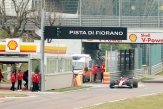
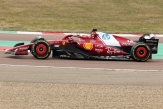
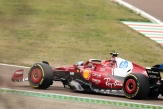
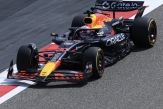
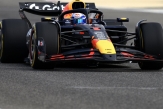
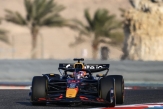

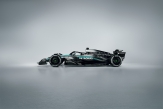
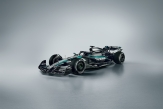
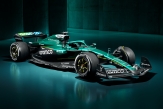
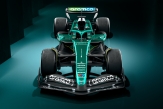
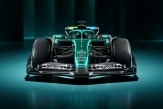
.jpg)
.jpg)
.jpg)

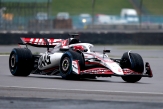

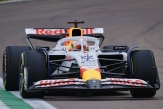
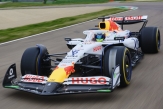
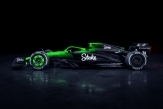
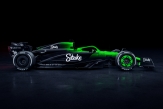

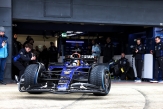
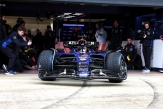
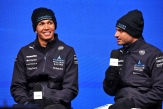

02/12/2025 от Огнян Тенчев (drJeckyll), няма коментари